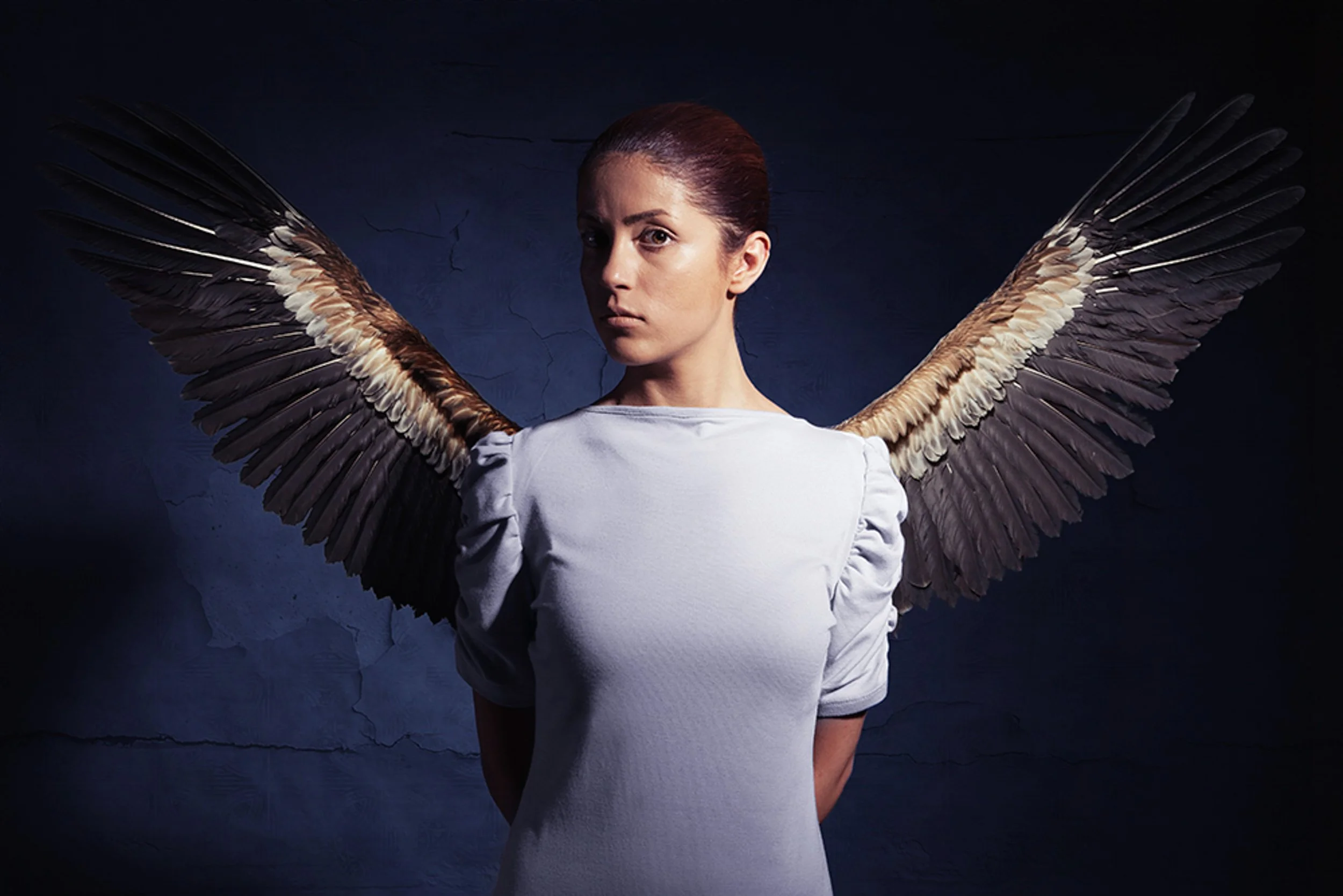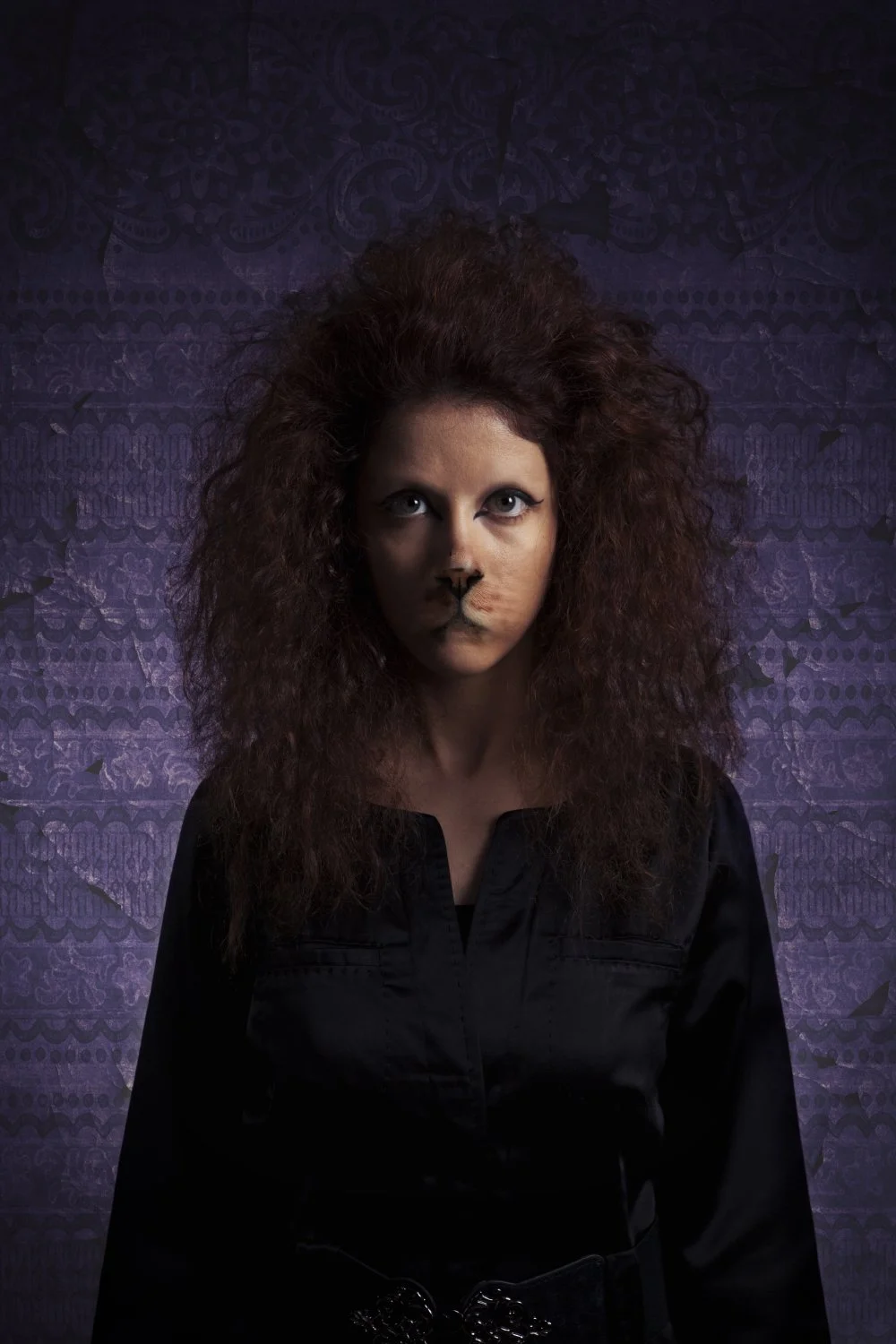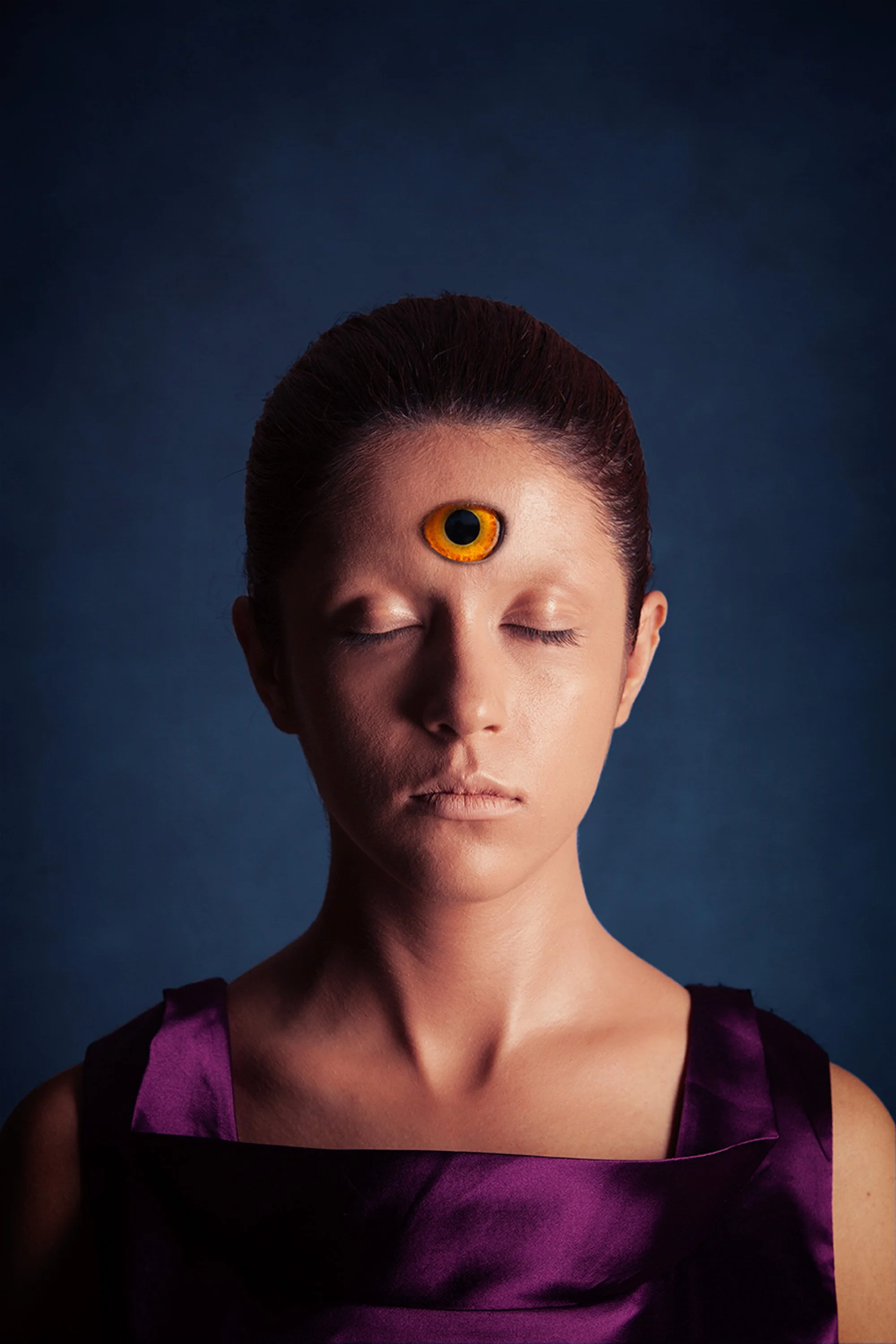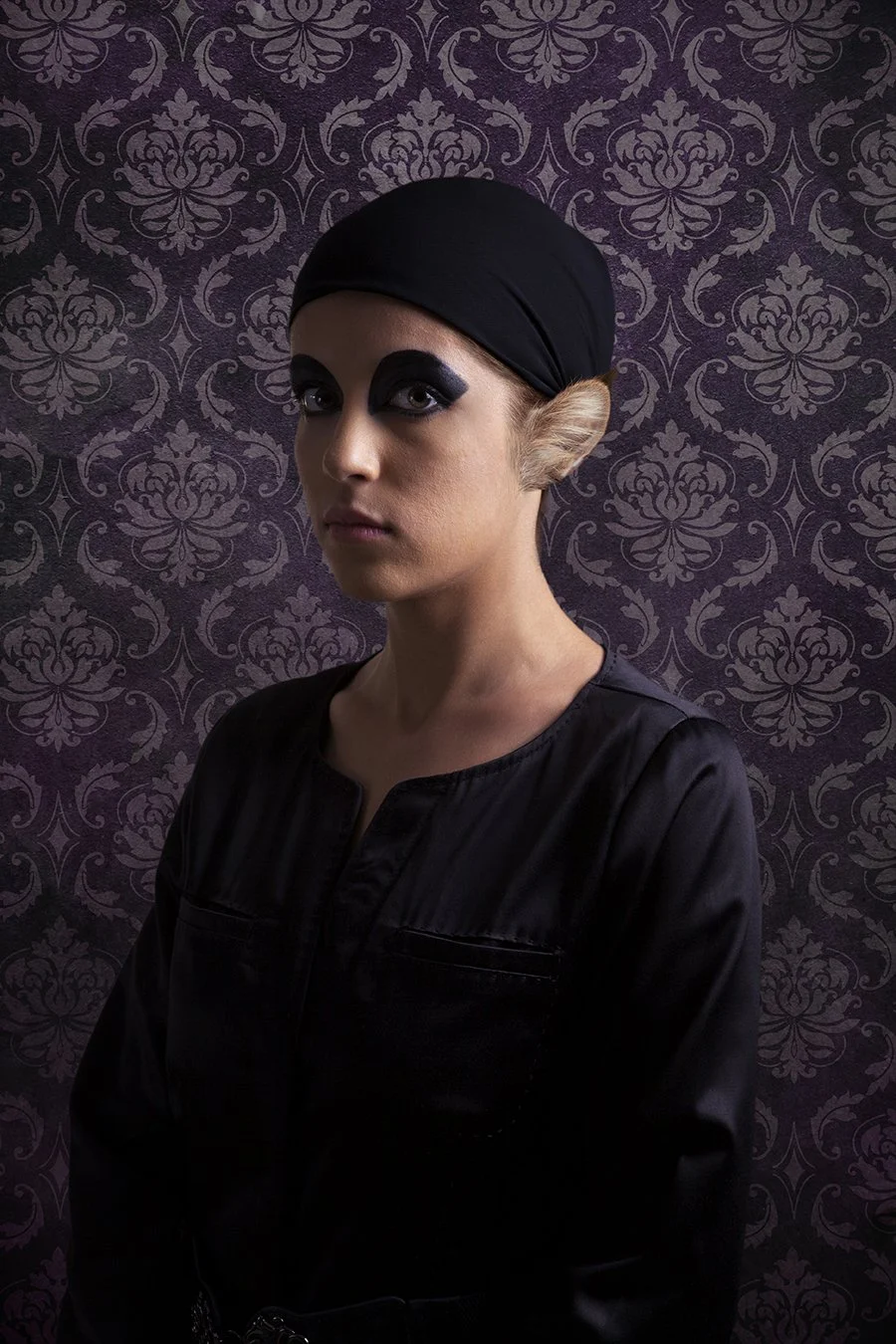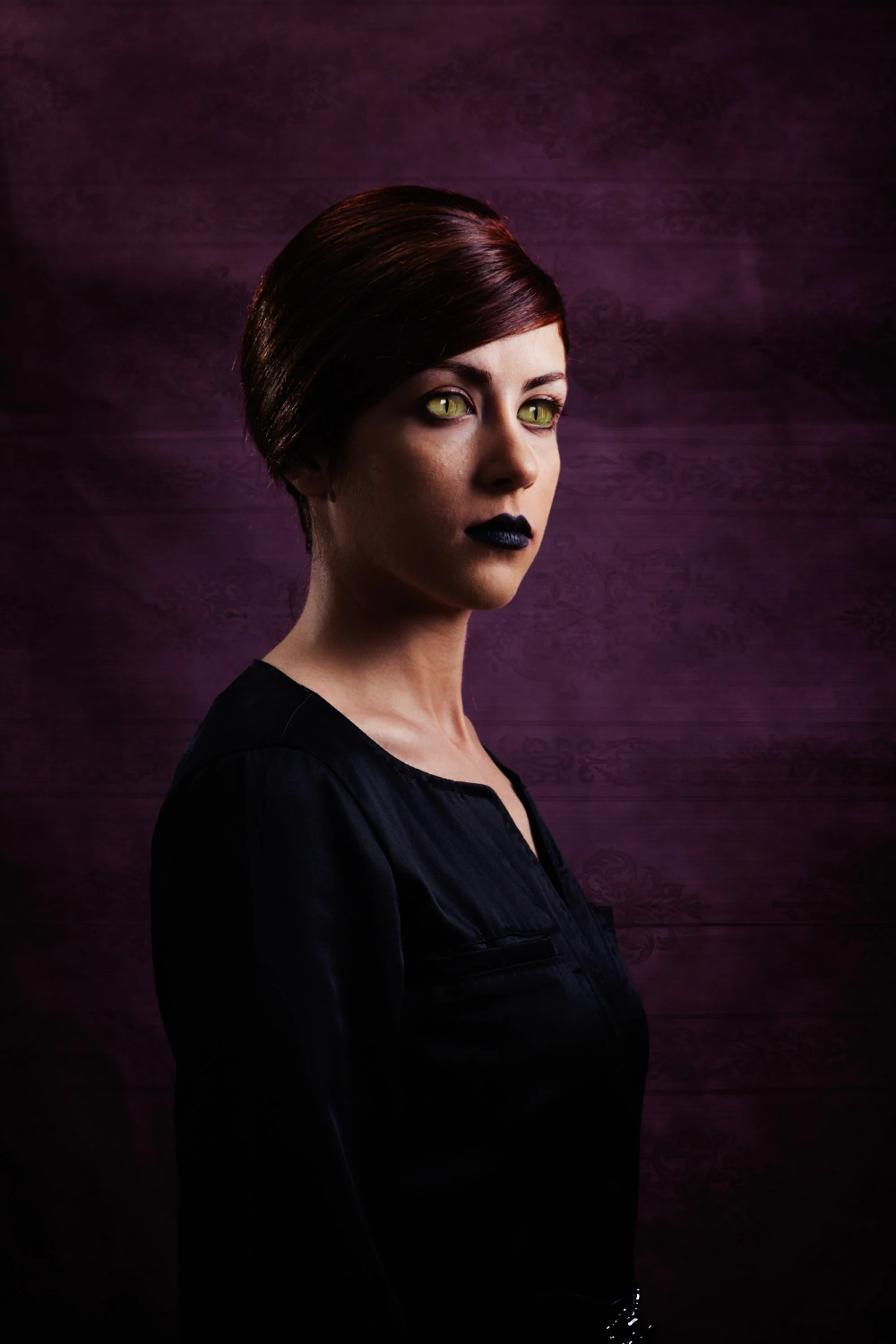The Unseen Darkness
The human-animals: Waking up from a deep sleep
The embodiment of animals in the human's notion and giving a comprehensive archetype of that, is probably the most common attempt the Art world has made to give an eloquent image of myths. Definitely the most important reason for this historical will is to put the emphasis on this point that the relations between humans and animals are far beyond the mere coexistence. Whether we consider the man as the most mature animal, or seek for animal disposition in his unconsciousness, or even deliberately, according to genetic data,try to compose the humans and animals' characteristics and consequently create new super-creatures.
From the archaic mythological characters in Iran, Greece, China and Egypt civilizations, to the science - fiction stories and movies in which they tend to fabricate a universe in the future, analyzing the animal disposition of humans or the human treatment of animals, has been a place for emerging the most fabulous contingencies. The humans who have regained the animal savagery or power in themselves, or on the contrary, the animals who are paradoxically tactful and amiable! Or more complicated, human- animals whose interwoven natures are internally encrypted.
It seems that we should consider Naqmeh Jahani's photo-art in the project "The Unseen Darkness" along such historical tradition.
In her precisely manipulated images, the artist stitches the morphological features of animals to her face in order to reach an aesthetic assimilation
of animal instincts in a human realm; the images which each of them vivifies the presence of a different animal. This insist on typological diversity of animals with divergent characters, refers us to the unconsciousness of a mind who's going to reveal the complexities and incongruity of its womanlike identity, as the ultimate and existential essence of their creator still remains unrevealed to us: A human trying to tame her innate and natural instincts; a somnambulist who's overhanging her repressed hopes and aspirations by the sense of her dreams; or simply, a novelty seeker artist who presents an appealing image of her fantasies with an acceptable proficiency on the medium of photography.
Mehdi Moghimnejad — Artist
In this video installation, after entering a dark one-door corridor, every individual encounters a black space associated with the pre-sleeping state, the space dividing the light and the wait before the eyelid. The corridor prepares the spectator for the nightmares. The spectator opens the door and enters the space where he experiences the preliminary sleeping stage.
A significant image in dimensions is before the spectator. Simultaneously, sounds related to that dream or image are heard in the dark room. Dreams, chiefly but not exclusively, think as like visual images. They benefit from auditory imagos but to a lesser extent. The purpose of sound playing is simply to emphasize the mutual importance of the sounds and the images in every dream. At the same time, every video comprises several successive photos that only a part moves every few seconds.
These slight vibrations are brought » merely to create senses of illusion, impermanence, and the transitory state of dreams. This has been chosen since dreams don't have a static quality but are rather flowing and indeterminate. Everything happens before the eyes one after another, and won't leave a thing behind but the illusion of seeing them. After experiencing the first dream, the spectator enters the second one via a door witnessing it very much like the first one, then undergoes the third dreams.
Right after the last dream, the spectator is led to an exit corridor associating the moment previous to rousing from sleep. The next space is the exterior and the state of awakening. The purpose of exhibiting these works was to put the full-conscious spectator right from the moment he opens the door to the corridor into the dream and the unconscious of the photographer. This way, the awakened spectator can pass the stages of going to sleep and dreaming. Indeed, when we prepare for sleep, we no longer have control over the sleeping stages and dreaming, but in this project, we can walk a dream in full consciousness.
Technique: Photomontage —— Presentation: Print on canvas —— Size: 150×100 cm —— Year: 2013
Technique: Photomontage —— Presentation: Print on canvas —— Size: 150×100 cm —— Year: 2013

